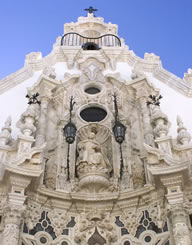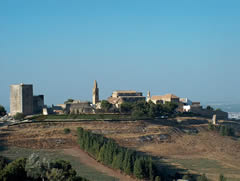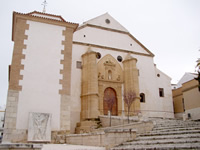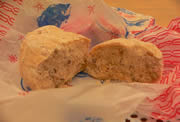-
 We hear the name of “Osuna Golf” again — 22 Feb 2013
We hear the name of “Osuna Golf” again — 22 Feb 2013El Pespunte: "The PGOU can be checked on Internet and it will be opened to inhabitants of Osuna suggestions" Read more
-
 Public information in August — 2 Aug 2013
Public information in August — 2 Aug 2013Public information in August BOJA nº148 of 30/ 07/13 Read more

OFFICE HEADQUARTER
C/ ALFONSO XII, 51
41640 (OSUNA)
SEVILLE
TEL - (+34) 954 81 14 86
info@osunagolf.es
Loading
Estepa
 Estepa forms part of the mountainous region South of Seville and is the second most important town of the region, after Osuna. It is located on the slope of the San Cristobal hill. 604 metres above sea level making it the highest locality in the region. 110 km from the capital city of Seville.
Estepa forms part of the mountainous region South of Seville and is the second most important town of the region, after Osuna. It is located on the slope of the San Cristobal hill. 604 metres above sea level making it the highest locality in the region. 110 km from the capital city of Seville.
With 12.682 inhabitants in 2014, an area of 202,42 square kilometres and a population density of 65,65/km². It is well connected with some capitals of Andalusia, like Seville, Granada or Almeria, thanks to the A-92 motorway and subdivisions.
 As a result of its location, Estepa is known as ‘el balcon de Andalucia’ (the balcony of Andalusia). It was founded on the top of San Cristobal hill, from where you can see Seville, Córdoba or Malaga, as for the mountains of Granada on days with a clear sky.
As a result of its location, Estepa is known as ‘el balcon de Andalucia’ (the balcony of Andalusia). It was founded on the top of San Cristobal hill, from where you can see Seville, Córdoba or Malaga, as for the mountains of Granada on days with a clear sky.
The most important economic activities in Estepa are the Christmas pastry industry and the production of olive oil. The production of these pastries takes place during the previous period to Christmas with the making of mantecados, polvorones and other sweets. The oil production in Espea and the region has been granted a denomination of quality certificate.
 Human archaeological remains, dated from before the Roman domination, have been found in the municipal area of Estepa. The old roman city of Ostippo gained importance as a result of its strategic location where different paths came together. Later, it became a Visigoths and Islamic enclave up to the conquest of King Fernando III ‘the Saint’ in 1241. The 16th century was the artistic and monumental period. In 1886 queen Maria Cristina de Habsburgo-Lorena gave it the category of city.
Human archaeological remains, dated from before the Roman domination, have been found in the municipal area of Estepa. The old roman city of Ostippo gained importance as a result of its strategic location where different paths came together. Later, it became a Visigoths and Islamic enclave up to the conquest of King Fernando III ‘the Saint’ in 1241. The 16th century was the artistic and monumental period. In 1886 queen Maria Cristina de Habsburgo-Lorena gave it the category of city.
 It was declared an artistic and historical site in 1965. With many civil and religious monuments of grate artistic and architectonic value, with views over the countryside. Festivities and fairs taking place all year round are also a touristic claim, in particular the Semana Santa processions.
It was declared an artistic and historical site in 1965. With many civil and religious monuments of grate artistic and architectonic value, with views over the countryside. Festivities and fairs taking place all year round are also a touristic claim, in particular the Semana Santa processions.